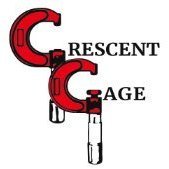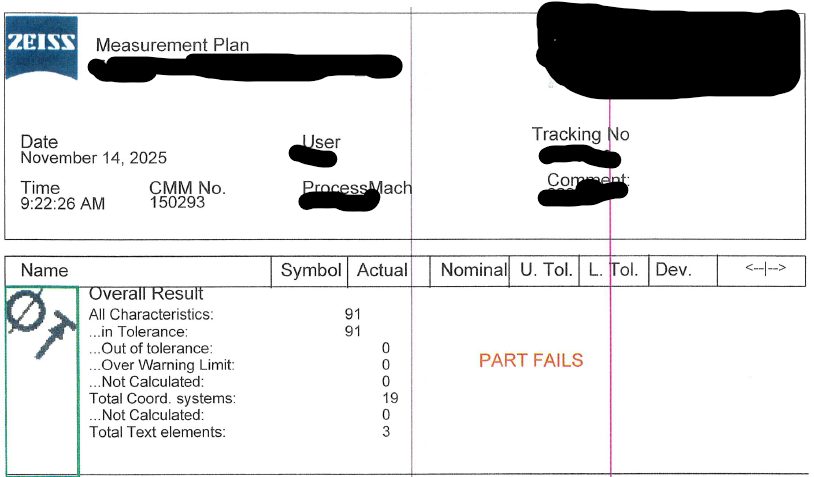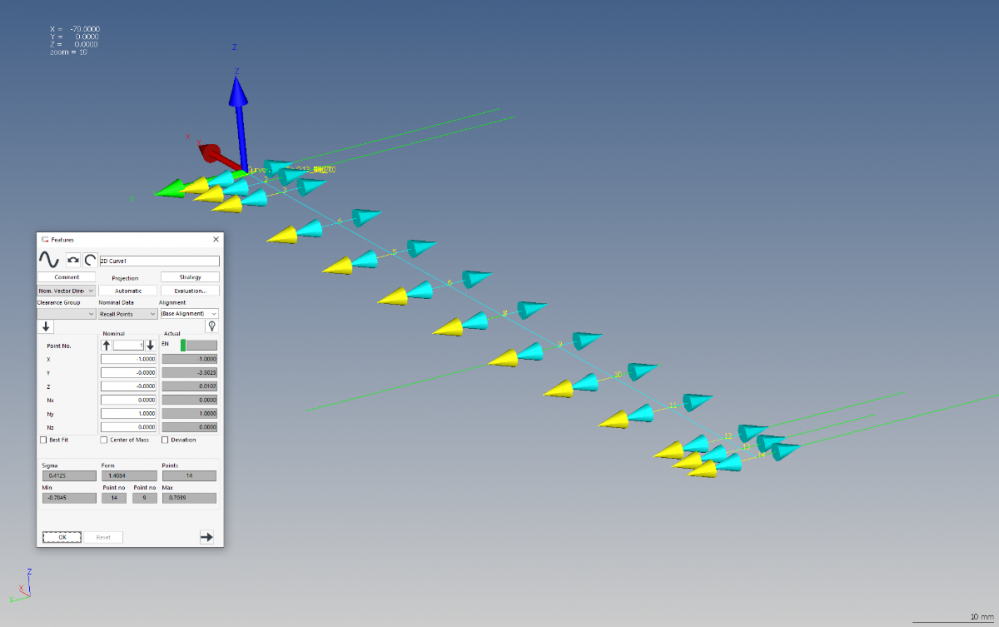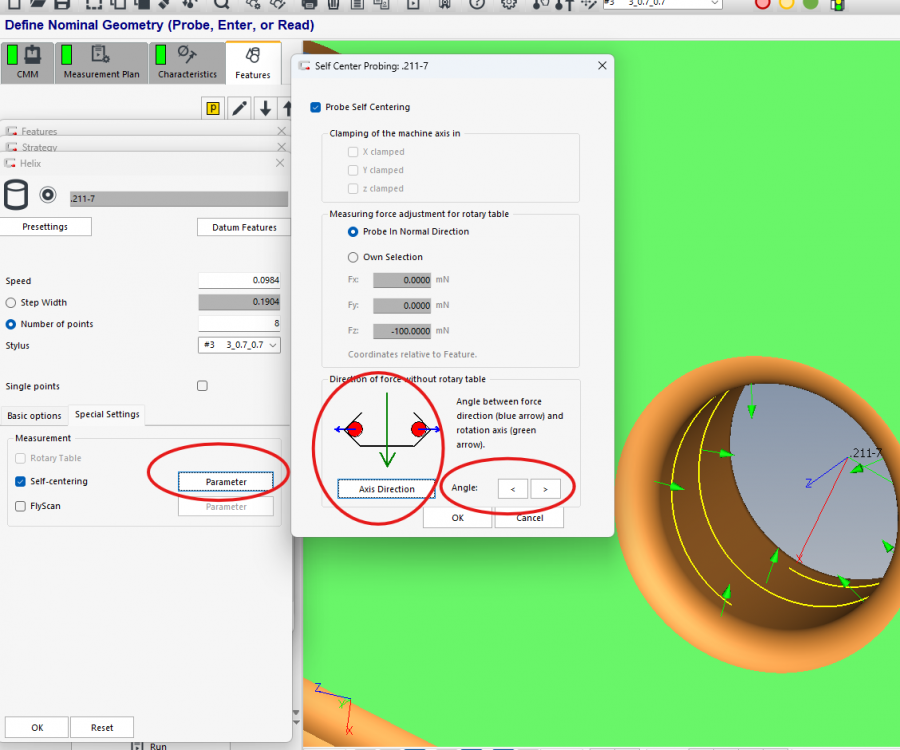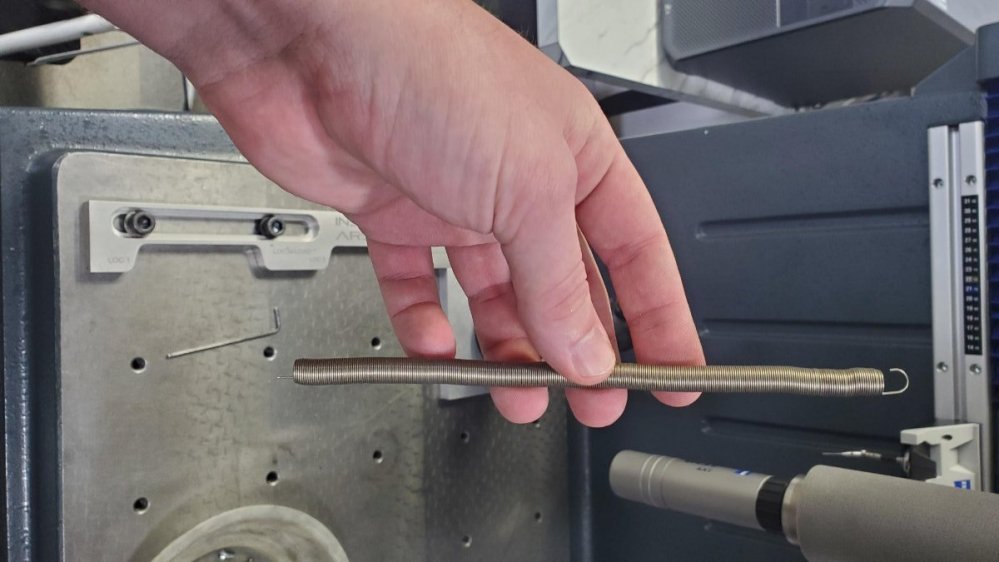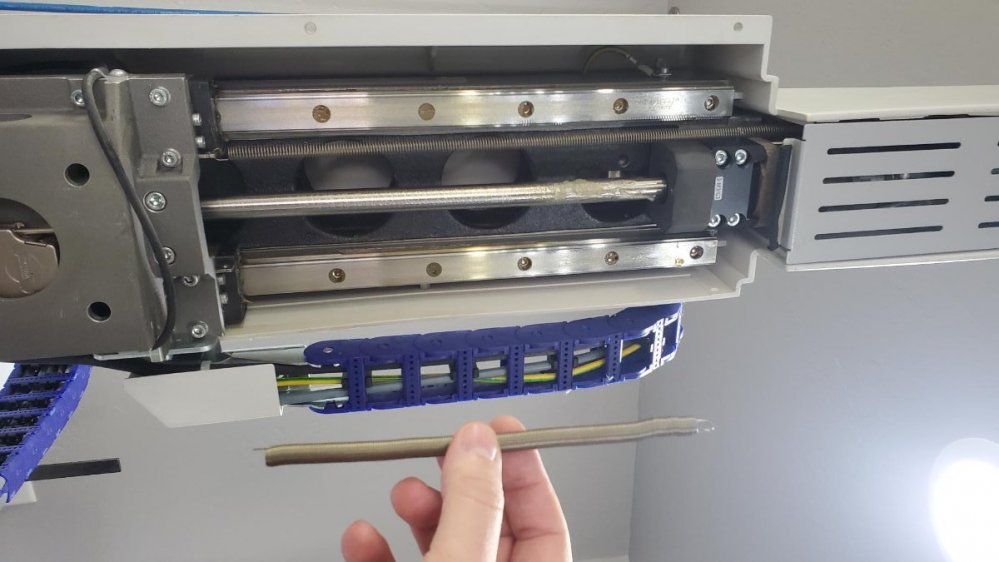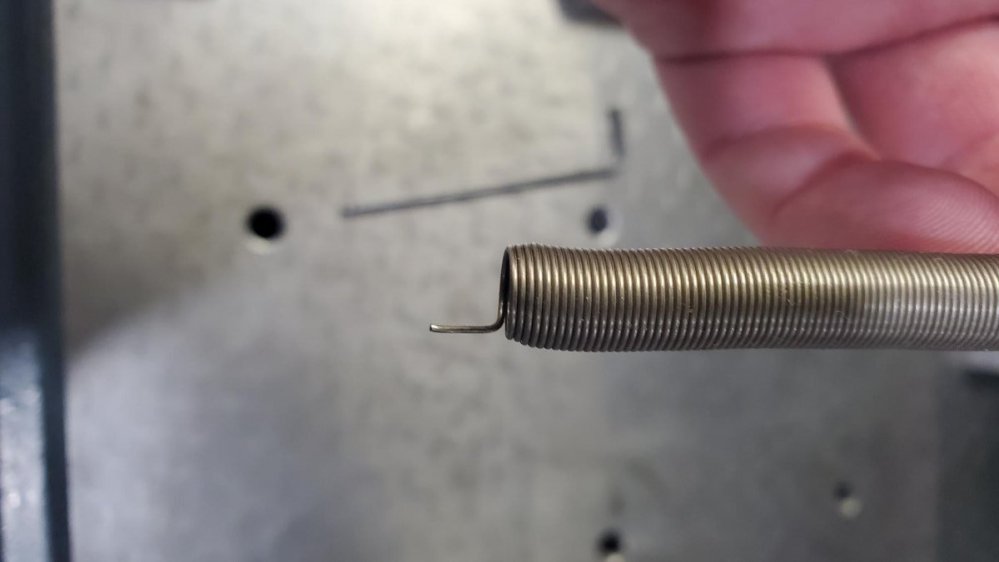All Activity
- Today
-
I'm running into an issue where all of my Line Profile deviations are inverted compared to Surface Profile and Surface Comparison deviations. Is there a quick/easy fix for this?
- Yesterday
-
I have the same issue. Simulation only.
-
We make MANY sized threads, so that is why I am curious how other people do it because it would end up being ALOT if we needed one for each hole on each part.
-
 [Ta...] joined the community
[Ta...] joined the community -
CAD > Evaluation. I generally click "Display" and "points". Then you can choose the type of geometry to show plus/minus material. Color Gradient is useful as well. It's pretty self-explanatory.
-
@Darci Burch Unless your facility only makes/checks a certain size threaded hole, having multiples of location plugs for most common sizes would be insanely expensive.
-
Unless you are using flex-plugs, just know that you measuring a projection of the thread to the surface that you are mounted on. We typically do not use thread plugs unless there are specific requirements. One thing that would drive us to use thread plugs would be if there is the need to measure the thread severely projected above the surface, and the measured cylinder isn't long to begin with.
-
Why do you need to have a physical feature to create physical points from theoretical points? If the theoretical points are where you believe they should be and you convert to physical points, run the points and see what values you get. Then try to use them in Curve.
-
I have read many times that using a tapped hole location gage is better than trying to scan the thread with the probe. Management approved us to get one or two per month and want me to determine which sizes are the highest need. But before I do all that, I am curious: Do you use them at your facility? Do you find them helpful? How many of each do you need? I see there are sets with 2 of each but what if a part has more than 2 of that size? Do I need a gage for each hole or can I do a programmable stop and prompt to move the gage the next hole? (seems risky in case the part gets moved but buying a bunch of each size gage would be very expensive)
-
[Je...] started following Calypso 2024 Custom Report
-
Ever since my company updated to Calypso 2024, we have been having sporadic issues where a part will check good and the overall results on our custom header will show passing, but then says the Part Fails on the right side of the report. We can not figure out why this is doing that or where to go to fix it. Any help/advise would be greatly appreciated!!
-
 [Gr...] joined the community
[Gr...] joined the community -
I was addressing Chad's question.
-
I had the same issue and were told by Zeiss guys I can't hide what you want to hide The only solution I have is to make a "Result element" and define the characteristics with variables That's a lot of manual work with high risk of mistake but I have no better idea I haven't tried the solution above that Shawn has posted
-
 [Ti...] joined the community
[Ti...] joined the community -
All, I put in a ticket with Zeiss and we figured out a solution for this issue. If any of you are familiar with hiding the ".M, .L" characteristics mentioned on Knowledgebase - https://portal.zeiss.com/knowledge-base?id=458620 , the solution is an addition to that code in PiWeb. For my specific case I wanted to hide the diameters for GDT Position for MMR/LMR and to do that we used the code: {^((?!\.\(M|L\)|\^Diameter For).)*$} If there is anything else that you particularly want to hide, I suggest being very specific in that code about the characteristic name so that you don't accidentally hide something important.
-
@Richard Stanich I'm not sure if I'm following correctly? Yes, you can change theoretical points to actual points if there is a physical feature to contact. In my case (and Chad Watton's), there is no physical feature to contact.
-
@Mark Boucher Yes, but that would only create the nominal curve, correct? In this case, I already have the nominal curve, but I'm unable to get the actuals into the curve since they are theoretical, and CALYPSO will not allow it. Below is the concept that I'm producing. Creating the theoretical symmetry points based on the max/min coordinate points of multiple opposing curves. I'm then able to bring these into a curve feature using the delte method that I mentioned above (somewhat). Because I already have the nominal points from the symmetry points, and there are only 14 points, I created it by hand. If there were more points, I would've used the method you mentioned to create the nominal path.
-
 [Br...] joined the community
[Br...] joined the community -
 [Pa...] joined the community
[Pa...] joined the community -
In strategy make sure you have your start and stop positions of your helix where you like it. Self-centering is going to require just a little more input than what you've done. In the helix strategy under special settings / self-centering is a "Parameter" box. Click it. Note that I have toggled the "angle" button until the force is specified outward (I'm using an internal thread). You can then change the axis direction. Because of the problem you encountered I would point that arrow at the hole bottom as shown here. While scanning the threads, I always monitor to ensure that the probe is advancing the correct direction for the thread, because I can get this backward during offline programming. This should help you stop falling out of the thread.
-
All you have to do is, for example, create a template program in Calypso 2014. Then open this template in Calypso 2023 and also open the program you want in a second window. Copy and paste the features and characteristics (no CAD model). You can’t copy any features from the newer version (for example, caliper distance, if it didn’t exist in the older version), and then save it. The key point is that this old template must not have been run before. You can't open an existing old program—just create a fresh new template.
-
Most of the work will handle active head and defined pitch. Combination of probing force, slow speed and filtering will do the job
-
How do you control helix movement to make sure probing is not off-center falling in and out of thread pitch? I'm curious, never thought of doing this.
-
Can't you convert the theocraticals to physicals then create a Curve? I have created theoretical points based on alignments to ensure vectors are correct, then make them a physical point.
-
A little something Copilot AI came up with. Hope it's helpful. Calypso_vs_Caligo_Comparison_UTF8.pdf
- 1 reply
-
- 2
-

-
 [He...] joined the community
[He...] joined the community -
 [Jo...] joined the community
[Jo...] joined the community -
 [Sa...] joined the community
[Sa...] joined the community -
Hello I did not find a special Caligo forum, therefore I ask here How hard is to learn the Caligo, when I already know (at least enough to program anything I need to) in Calypso? Will one day training by enough?
-
 [Ma...] joined the community
[Ma...] joined the community -
 [Ad...] joined the community
[Ad...] joined the community -
I use CAD/ Creating Features/ Freeform/ Curve and select the file option to import the points. That is if you have Freeform/ Curve as an option.
-
@Chad Watton So, I tested it out, and it works... sort of. The curve adopts the theoretical points after you delete the actual points, with the same name caveat, of course. But the actuals(XYZ) within the curve do not match the theoretical actual (XYZ). They are close in some cases, but then like 2mm plus off in others. So not sure where those numbers are being pulled from. My theoretical points are Symmetry Points, so maybe that is having an influence?
- Last week
-
Issue has been at least temporarily resolved as we await our Zeiss Support ticket to be answered. Company ownership (they make the calls) chose to rebend the end of the broken spring into a hook and reinstall it. I am monitoring it and haven't had any issues and everything requalified without hiccups. Will report back if issue persists or Zeiss tech support has an action plan.
-
Well this is a first! Let me start by saying that I have already opened a support ticket with Zeiss and am waiting to hear back from them but wanted to see if any of you have experienced this before. I was running parts on our Zeiss Duramax, nothing out of the ordinary, then I heard an alarming noise. Sounded like something was loose and rattling around anytime the Z-Axis was in motion. I then noticed a spring that was barely popping out the bottom of the cover. Very odd and concerning! So I then removed the Z-Axis front cover and found that the spring was completely loose with one of the hook ends broken or worn through. The other spring on the left side is still intact and I appear to have full range of motion with our CMM. Besides needing to clean and grease the CMM axis and scales (judge away) any thoughts on this? Is it something we can replace/install if we get the right spring ourselves through Zeiss or is this going to require a Zeiss tech to come out and do this with a full recalibration. Is the machine safe to run in the meantime if I take it slow and monitor everything or is this machine going to have to be considered down until we replace that broken spring? Definitely in a bit of a jam and right before the holidays. We do have another identical CMM so we aren't completely down but this is a nice kick in the you know whats.

